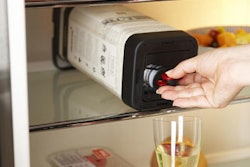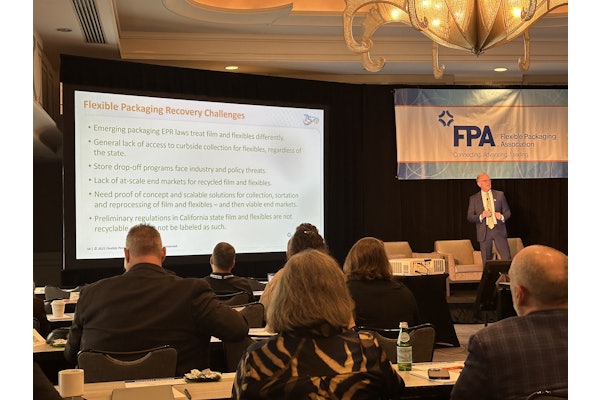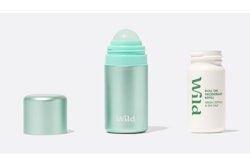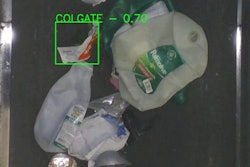
In a marketplace where carbonated soft drink sales are softening, where hot-fill technology is increasingly perceived as less than optimal from a sustainable packaging standpoint, where bottled water sales are finally tapering off, and where consumers want minimally processed and healthful foods, aseptic packaging is one hot topic. So it's little wonder that attendance at the recent Aseptipak 2009 conference was in the range of 250 people. What surprised me most in my day and a half at this event was how far along electron-beam sterilization has come. The Farmright Group showed its Dairystix packages, which are produced on a form/fill/seal stick packaging system that uses electron beam sterilization instead of hydrogen peroxide or paracetic acid.
Most intriguing from a Wow Factor standpoint was a high-speed rotary machine from Shibuya, described in a presentation by Chad Ellis, senior project engineer at Shibuya Hoppmann. I don't know about you, but I have to say that the thought of aseptically filling beverages in PET containers at 900 bottles/min with no need for chemicals or any consumption of rinse water is pretty close to remarkable. And the footprint of the machine is about 1/6 that of a comparable system using paracetic acid for sterilizing and 1/3 the size of a hydrogen peroxide system, said Ellis.
One Aseptipak attendee I spoke to, a representative of a beverage marketer, was clearly intrigued by the technology. But she worried about worker safety issues presented by EB, since it's a technology that involves radiation. Others questioned why Shibuya designed the system in such a way that the electron beams must travel from the outside of the PET bottles to the inside. "Why not insert an emitter into the bottle so that energy consumed in the sterilization process can be reduced," asked one fellow at lunch. Questions like these are inevitable. And who knows, by the time Shibuya and the others who are developing EB for use in aseptic packaging finally get things perfected, some other sterilizing technique could surface that will make EB less than optimal. Pulsed light, for example, was also displayed as a sterilizing medium at the Aseptipak tabletop exhibits of both Fogg and Fowler/Claranor. We'll just have to wait and see, won't we.
Speaking of wait and see, the mood of brand owners at Aseptipak was anything but. The conference included a real-time survey that even conference organizer Ron Schotland would admit was wildly unscientific. Even so, when brand owners in attendance were asked how many planned on investing in aseptic packaging in the next 12 months, 52% responded yes. "And," observed consultant Ray Bourque of Ray-Pak Inc., "another 26% figured on investing in aseptic packaging in the next three years. I was encouraged by that, and a little surprised." Hear more of Ray's observations in a podcast.
Most intriguing from a Wow Factor standpoint was a high-speed rotary machine from Shibuya, described in a presentation by Chad Ellis, senior project engineer at Shibuya Hoppmann. I don't know about you, but I have to say that the thought of aseptically filling beverages in PET containers at 900 bottles/min with no need for chemicals or any consumption of rinse water is pretty close to remarkable. And the footprint of the machine is about 1/6 that of a comparable system using paracetic acid for sterilizing and 1/3 the size of a hydrogen peroxide system, said Ellis.
One Aseptipak attendee I spoke to, a representative of a beverage marketer, was clearly intrigued by the technology. But she worried about worker safety issues presented by EB, since it's a technology that involves radiation. Others questioned why Shibuya designed the system in such a way that the electron beams must travel from the outside of the PET bottles to the inside. "Why not insert an emitter into the bottle so that energy consumed in the sterilization process can be reduced," asked one fellow at lunch. Questions like these are inevitable. And who knows, by the time Shibuya and the others who are developing EB for use in aseptic packaging finally get things perfected, some other sterilizing technique could surface that will make EB less than optimal. Pulsed light, for example, was also displayed as a sterilizing medium at the Aseptipak tabletop exhibits of both Fogg and Fowler/Claranor. We'll just have to wait and see, won't we.
Speaking of wait and see, the mood of brand owners at Aseptipak was anything but. The conference included a real-time survey that even conference organizer Ron Schotland would admit was wildly unscientific. Even so, when brand owners in attendance were asked how many planned on investing in aseptic packaging in the next 12 months, 52% responded yes. "And," observed consultant Ray Bourque of Ray-Pak Inc., "another 26% figured on investing in aseptic packaging in the next three years. I was encouraged by that, and a little surprised." Hear more of Ray's observations in a podcast.


























